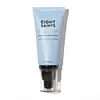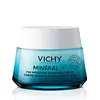What's inside
What's inside
 Key Ingredients
Key Ingredients

 Benefits
Benefits

 Concerns
Concerns

 Ingredients Side-by-side
Ingredients Side-by-side

Aloe Barbadensis Leaf Juice
Skin ConditioningWater
Skin ConditioningHelianthus Annuus Seed Oil
EmollientGlyceryl Stearate
EmollientIsopropyl Palmitate
EmollientCetyl Alcohol
EmollientGlycerin
HumectantStearic Acid
CleansingPelargonium Graveolens Oil
MaskingCocos Nucifera Oil
MaskingSimmondsia Chinensis Seed Oil
EmollientTheobroma Cacao Seed Butter
EmollientBeeswax
Emulsion StabilisingButyrospermum Parkii Butter
Skin ConditioningRosa Canina Fruit Oil
EmollientCalophyllum Inophyllum Seed Oil
AntimicrobialMacadamia Ternifolia Seed Oil
EmollientBorago Officinalis Seed Oil
EmollientLinum Usitatissimum Seed Oil
PerfumingOenothera Biennis Oil
EmollientHyaluronic Acid
HumectantPanthenol
Skin ConditioningTocopherol
AntioxidantBoswellia Carterii Oil
MaskingSodium Cocoyl/Stearoyl (Alanine/Arginine/Asparagine/Aspartic Acid/Glutamic Acid/Glutamine/Glycine/Histidine/Isoleucine/Leucine/Lysine/Phenylalanine/Proline/Serine/Threonine/Tyrosine/Valine)
EmollientCamellia Sinensis Leaf Extract
AntimicrobialSodium Lactate
BufferingAvena Sativa Kernel Extract
AbrasiveCentella Asiatica Extract
CleansingEquisetum Arvense Extract
AstringentTaraxacum Officinale Extract
Skin ConditioningCalendula Officinalis Flower Extract
MaskingChamomilla Recutita Oil
MaskingLavandula Angustifolia Oil
MaskingArnica Montana Flower
Skin ConditioningEthylhexyl Palmitate
EmollientPotassium Stearate
CleansingPhenoxyethanol
PreservativeXanthan Gum
EmulsifyingEthylhexylglycerin
Skin ConditioningCitrus Aurantium Bergamia Fruit Oil
MaskingCitrus Aurantium Dulcis Peel Oil
MaskingCitrus Limon Peel Oil
MaskingRose Flower Oil
MaskingAloe Barbadensis Leaf Juice, Water, Helianthus Annuus Seed Oil, Glyceryl Stearate, Isopropyl Palmitate, Cetyl Alcohol, Glycerin, Stearic Acid, Pelargonium Graveolens Oil, Cocos Nucifera Oil, Simmondsia Chinensis Seed Oil, Theobroma Cacao Seed Butter, Beeswax, Butyrospermum Parkii Butter, Rosa Canina Fruit Oil, Calophyllum Inophyllum Seed Oil, Macadamia Ternifolia Seed Oil, Borago Officinalis Seed Oil, Linum Usitatissimum Seed Oil, Oenothera Biennis Oil, Hyaluronic Acid, Panthenol, Tocopherol, Boswellia Carterii Oil, Sodium Cocoyl/Stearoyl (Alanine/Arginine/Asparagine/Aspartic Acid/Glutamic Acid/Glutamine/Glycine/Histidine/Isoleucine/Leucine/Lysine/Phenylalanine/Proline/Serine/Threonine/Tyrosine/Valine), Camellia Sinensis Leaf Extract, Sodium Lactate, Avena Sativa Kernel Extract, Centella Asiatica Extract, Equisetum Arvense Extract, Taraxacum Officinale Extract, Calendula Officinalis Flower Extract, Chamomilla Recutita Oil, Lavandula Angustifolia Oil, Arnica Montana Flower, Ethylhexyl Palmitate, Potassium Stearate, Phenoxyethanol, Xanthan Gum, Ethylhexylglycerin, Citrus Aurantium Bergamia Fruit Oil, Citrus Aurantium Dulcis Peel Oil, Citrus Limon Peel Oil, Rose Flower Oil
Water
Skin ConditioningGlycerin
HumectantDicaprylyl Ether
EmollientPentylene Glycol
Skin ConditioningPolyglyceryl-6 Distearate
EmulsifyingNiacinamide
SmoothingPropanediol
SolventCetyl Esters
EmollientJojoba Esters
EmollientCetearyl Isononanoate
EmollientSqualane
EmollientBehenyl Alcohol
EmollientAdenosine
Skin ConditioningCapryloyl Salicylic Acid
ExfoliatingHydroxyacetophenone
AntioxidantMineral Salts
Skin ConditioningSodium Hyaluronate
HumectantTrisodium Ethylenediamine Disuccinate
Vitreoscilla Ferment
Skin ConditioningTocopherol
AntioxidantAcacia Decurrens Flower Cera
EmollientAcrylamide/Sodium Acryloyldimethyltaurate Copolymer
Emulsion StabilisingCetyl Alcohol
EmollientHelianthus Annuus Seed Cera
EmollientHydroxypropyl Starch Phosphate
Isohexadecane
EmollientPolyglycerin-3
HumectantPolyglyceryl-3 Beeswax
EmulsifyingPolysorbate 80
EmulsifyingSodium Stearoyl Glutamate
CleansingSorbitan Oleate
EmulsifyingWater, Glycerin, Dicaprylyl Ether, Pentylene Glycol, Polyglyceryl-6 Distearate, Niacinamide, Propanediol, Cetyl Esters, Jojoba Esters, Cetearyl Isononanoate, Squalane, Behenyl Alcohol, Adenosine, Capryloyl Salicylic Acid, Hydroxyacetophenone, Mineral Salts, Sodium Hyaluronate, Trisodium Ethylenediamine Disuccinate, Vitreoscilla Ferment, Tocopherol, Acacia Decurrens Flower Cera, Acrylamide/Sodium Acryloyldimethyltaurate Copolymer, Cetyl Alcohol, Helianthus Annuus Seed Cera, Hydroxypropyl Starch Phosphate, Isohexadecane, Polyglycerin-3, Polyglyceryl-3 Beeswax, Polysorbate 80, Sodium Stearoyl Glutamate, Sorbitan Oleate
Ingredients Explained
These ingredients are found in both products.
Ingredients higher up in an ingredient list are typically present in a larger amount.
Cetyl Alcohol is a fatty alcohol. Fatty Alcohols are most often used as an emollient or to thicken a product.
Its main roles are:
Though it has "alcohol" in the name, it is not related to denatured alcohol or ethyl alcohol.
The FDA allows products labeled "alcohol-free" to have fatty alcohols.
Learn more about Cetyl AlcoholGlycerin is already naturally found in your skin. It helps moisturize and protect your skin.
A study from 2016 found glycerin to be more effective as a humectant than AHAs and hyaluronic acid.
As a humectant, it helps the skin stay hydrated by pulling moisture to your skin. The low molecular weight of glycerin allows it to pull moisture into the deeper layers of your skin.
Hydrated skin improves your skin barrier; Your skin barrier helps protect against irritants and bacteria.
Glycerin has also been found to have antimicrobial and antiviral properties. Due to these properties, glycerin is often used in wound and burn treatments.
In cosmetics, glycerin is usually derived from plants such as soybean or palm. However, it can also be sourced from animals, such as tallow or animal fat.
This ingredient is organic, colorless, odorless, and non-toxic.
Glycerin is the name for this ingredient in American English. British English uses Glycerol/Glycerine.
Learn more about GlycerinTocopherol (also known as Vitamin E) is a common antioxidant used to help protect the skin from free-radicals and strengthen the skin barrier. It's also fat soluble - this means our skin is great at absorbing it.
Vitamin E also helps keep your natural skin lipids healthy. Your lipid skin barrier naturally consists of lipids, ceramides, and fatty acids. Vitamin E offers extra protection for your skin’s lipid barrier, keeping your skin healthy and nourished.
Another benefit is a bit of UV protection. Vitamin E helps reduce the damage caused by UVB rays. (It should not replace your sunscreen). Combining it with Vitamin C can decrease sunburned cells and hyperpigmentation after UV exposure.
You might have noticed Vitamin E + C often paired together. This is because it is great at stabilizing Vitamin C. Using the two together helps increase the effectiveness of both ingredients.
There are often claims that Vitamin E can reduce/prevent scarring, but these claims haven't been confirmed by scientific research.
Learn more about TocopherolWater. It's the most common cosmetic ingredient of all. You'll usually see it at the top of ingredient lists, meaning that it makes up the largest part of the product.
So why is it so popular? Water most often acts as a solvent - this means that it helps dissolve other ingredients into the formulation.
You'll also recognize water as that liquid we all need to stay alive. If you see this, drink a glass of water. Stay hydrated!
Learn more about Water